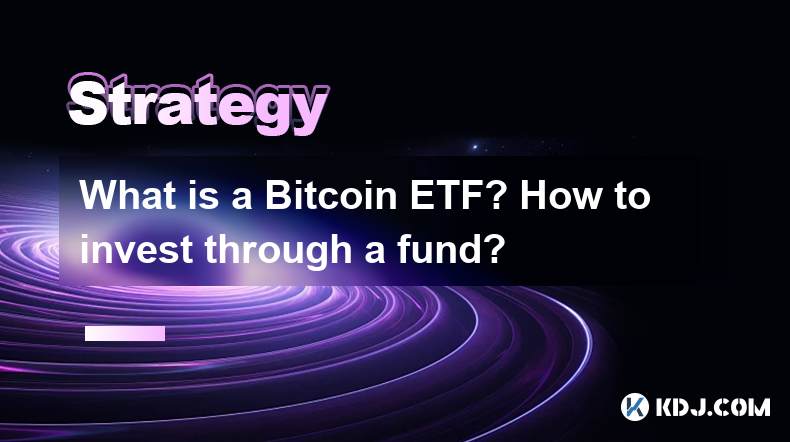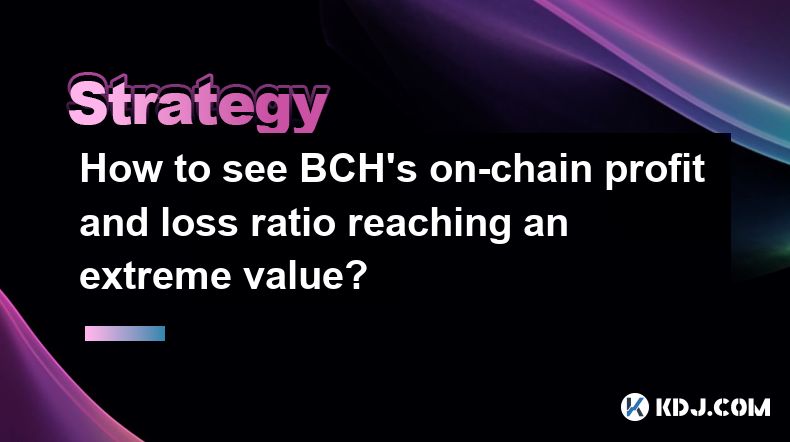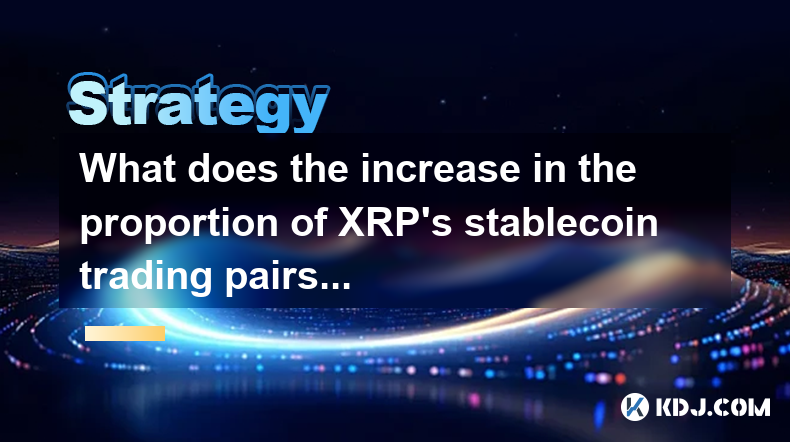-
 Bitcoin
Bitcoin $94,263.1102
6.66% -
 Ethereum
Ethereum $1,796.0138
10.68% -
 Tether USDt
Tether USDt $1.0002
0.03% -
 XRP
XRP $2.2843
8.98% -
 BNB
BNB $614.1507
1.44% -
 Solana
Solana $153.0124
9.92% -
 USDC
USDC $1.0000
0.01% -
 Dogecoin
Dogecoin $0.1833
12.01% -
 Cardano
Cardano $0.7081
10.97% -
 TRON
TRON $0.2466
-0.67% -
 Chainlink
Chainlink $14.9251
12.11% -
 Avalanche
Avalanche $23.0399
14.40% -
 Sui
Sui $2.9405
27.82% -
 Stellar
Stellar $0.2734
11.00% -
 UNUS SED LEO
UNUS SED LEO $9.0647
-0.09% -
 Shiba Inu
Shiba Inu $0.0...01377
10.31% -
 Hedera
Hedera $0.1879
8.77% -
 Toncoin
Toncoin $3.1443
7.75% -
 Bitcoin Cash
Bitcoin Cash $361.4165
4.29% -
 Polkadot
Polkadot $4.1768
11.51% -
 Litecoin
Litecoin $84.9758
6.68% -
 Hyperliquid
Hyperliquid $19.0960
5.18% -
 Bitget Token
Bitget Token $4.6210
4.03% -
 Dai
Dai $1.0000
0.01% -
 Ethena USDe
Ethena USDe $0.9993
0.02% -
 Pi
Pi $0.6742
6.81% -
 Monero
Monero $226.4704
4.42% -
 Pepe
Pepe $0.0...09245
14.03% -
 Uniswap
Uniswap $6.0077
12.23% -
 Aptos
Aptos $5.3777
11.09%
What is a Bitcoin ETF? How to invest through a fund?
A Bitcoin ETF allows investors to gain exposure to Bitcoin's price without owning it directly, offering a familiar and regulated investment option on traditional stock exchanges.
Apr 09, 2025 at 05:07 am

A Bitcoin ETF, or Exchange-Traded Fund, is a type of investment vehicle that tracks the price of Bitcoin and allows investors to gain exposure to the cryptocurrency without directly owning it. This financial product is traded on traditional stock exchanges, making it more accessible to investors who are familiar with conventional investment methods but are interested in entering the cryptocurrency market.
Understanding Bitcoin ETFs
A Bitcoin ETF operates similarly to other ETFs, which are funds that hold a basket of assets and are traded on stock exchanges. In the case of a Bitcoin ETF, the fund's value is tied to the price of Bitcoin. This means that as the price of Bitcoin fluctuates, so does the value of the ETF. The primary advantage of investing in a Bitcoin ETF is that it provides a way to invest in Bitcoin without the complexities of managing a cryptocurrency wallet or dealing with cryptocurrency exchanges.
Benefits of Investing in a Bitcoin ETF
Investing in a Bitcoin ETF offers several benefits. Firstly, it provides a regulated and familiar investment vehicle for those who are accustomed to trading stocks and other traditional assets. Secondly, it eliminates the need to manage private keys and secure cryptocurrency wallets, reducing the risk of theft or loss. Thirdly, it allows for easier diversification, as investors can purchase shares in a Bitcoin ETF alongside other investments in their portfolio.
How to Invest in a Bitcoin ETF
Investing in a Bitcoin ETF is similar to investing in any other ETF. Here are the steps to get started:
Choose a Brokerage Account: You will need to open a brokerage account with a firm that offers access to the stock exchange where the Bitcoin ETF is listed. Many popular brokerages, such as Fidelity, Charles Schwab, and Vanguard, offer access to ETFs.
Research Available Bitcoin ETFs: There are several Bitcoin ETFs available, each with its own structure and fees. Some ETFs hold actual Bitcoin, while others use derivatives to track the price. Research the different options to find the one that best suits your investment goals.
Place an Order: Once you have selected a Bitcoin ETF, you can place an order through your brokerage account. You can choose to buy shares at the current market price or set a limit order to buy at a specific price.
Monitor Your Investment: After purchasing shares in a Bitcoin ETF, you can monitor its performance through your brokerage account. You can also set up alerts to notify you of significant price movements.
Risks and Considerations
While Bitcoin ETFs offer a convenient way to invest in Bitcoin, there are also risks to consider. Firstly, the value of a Bitcoin ETF is subject to the same volatility as Bitcoin itself, which can lead to significant price swings. Secondly, there may be fees associated with the ETF, such as management fees and trading costs, which can eat into your returns. Thirdly, regulatory changes could impact the availability and performance of Bitcoin ETFs.
Tax Implications of Bitcoin ETFs
Investing in a Bitcoin ETF can have different tax implications compared to directly owning Bitcoin. In many jurisdictions, gains from selling shares in a Bitcoin ETF are treated as capital gains, similar to other investments. However, the specific tax treatment can vary depending on your location and the structure of the ETF. It is advisable to consult with a tax professional to understand the tax implications of investing in a Bitcoin ETF.
Choosing the Right Bitcoin ETF
When selecting a Bitcoin ETF, there are several factors to consider. Firstly, look at the expense ratio, which is the annual fee charged by the fund. A lower expense ratio can help maximize your returns. Secondly, consider the liquidity of the ETF, as more liquid ETFs tend to have narrower bid-ask spreads, making it easier to buy and sell shares. Thirdly, review the fund's holdings and structure to ensure it aligns with your investment strategy.
Frequently Asked Questions
Q: Can I hold a Bitcoin ETF in a retirement account?
A: Yes, many brokerages allow you to hold ETFs, including Bitcoin ETFs, in retirement accounts such as an IRA or 401(k). However, it is important to check with your brokerage to confirm their specific policies and any potential restrictions.
Q: How does the performance of a Bitcoin ETF compare to holding Bitcoin directly?
A: The performance of a Bitcoin ETF is designed to track the price of Bitcoin, but there may be slight deviations due to fees and other factors. Over time, the performance should be very similar, but holding Bitcoin directly gives you full control over the asset and may be more cost-effective if you manage it well.
Q: Are Bitcoin ETFs available globally?
A: Bitcoin ETFs are available in several countries, but availability can vary. Some countries have approved Bitcoin ETFs for trading on their stock exchanges, while others have not. It is important to check the regulatory environment in your country to determine if Bitcoin ETFs are available.
Q: Can I short a Bitcoin ETF?
A: Yes, many brokerages allow you to short sell shares of a Bitcoin ETF, just as you would with any other ETF. Short selling involves borrowing shares and selling them with the expectation of buying them back at a lower price to return to the lender, profiting from the price difference.
Disclaimer:info@kdj.com
The information provided is not trading advice. kdj.com does not assume any responsibility for any investments made based on the information provided in this article. Cryptocurrencies are highly volatile and it is highly recommended that you invest with caution after thorough research!
If you believe that the content used on this website infringes your copyright, please contact us immediately (info@kdj.com) and we will delete it promptly.
- title: Bitcoin (BTC) price reaches six-week high as US-based BTC ETFs record $936.4 million net inflow
- 2025-04-23 16:45:12
- Bitcoin Surpasses $93,000 Again
- 2025-04-23 16:45:12
- Trump Media and Crypto.com to Launch a Series of Exchange-Traded Funds
- 2025-04-23 16:40:12
- Richard Heart, Founder of HEX and PulseChain Crypto Projects, Wins Rare Legal Victory Against the SEC
- 2025-04-23 16:40:12
- Immutable (IMX) Token Price Skyrockets 44%
- 2025-04-23 16:35:12
- The saying “A rising tide lifts all boats” perfectly captures the current state of the crypto market
- 2025-04-23 16:35:12
Related knowledge

Where can I find the current average holding cost of XRP in the market?
Apr 22,2025 at 11:00pm
Where can I find the current average holding cost of XRP in the market? Finding the current average holding cost of XRP in the market can be a challenging task, as this information is not readily available on most mainstream cryptocurrency platforms. However, there are several methods and resources that you can use to estimate this figure. In this artic...

Where is the short-term holding cost line of BCH?
Apr 23,2025 at 06:00am
The short-term holding cost line of Bitcoin Cash (BCH) is a crucial metric for traders and investors looking to understand the immediate market sentiment and potential price movements. This line represents the average cost at which BCH has been held for a short period, typically considered to be less than 30 days. By analyzing this metric, market partic...

Is BCH's UTXO age distribution useful for judging buying and selling points?
Apr 23,2025 at 02:07am
The concept of UTXO (Unspent Transaction Output) age distribution in Bitcoin Cash (BCH) can be a valuable tool for analyzing market trends and potentially identifying buying and selling points. UTXO age distribution refers to the age of unspent outputs in the blockchain, which can provide insights into the behavior of different types of investors and th...

Can BCH's PSAR indicator chase the rise when it turns from empty to long?
Apr 22,2025 at 10:35pm
The Parabolic Stop and Reverse (PSAR) indicator is a popular tool among traders in the cryptocurrency market, including those trading Bitcoin Cash (BCH). The PSAR indicator is designed to identify potential reversals in the price trend of an asset. When the PSAR indicator turns from empty to long, it suggests a potential bullish trend, prompting traders...

How to see BCH's on-chain profit and loss ratio reaching an extreme value?
Apr 23,2025 at 08:35am
Introduction to BCH On-Chain Profit and Loss RatioBitcoin Cash (BCH), a fork of Bitcoin, has its own ecosystem with a significant on-chain activity. One of the critical metrics to assess the health and sentiment of BCH is the on-chain profit and loss ratio. This ratio helps investors and analysts understand whether the majority of BCH holders are in pro...

What does the increase in the proportion of XRP's stablecoin trading pairs indicate?
Apr 23,2025 at 02:00am
The increase in the proportion of XRP's stablecoin trading pairs indicates a significant shift in the trading dynamics of XRP on cryptocurrency exchanges. This trend suggests several important factors at play within the XRP ecosystem and the broader crypto market. Let's delve deeper into what this increase signifies. Higher Liquidity and Trading VolumeT...

Where can I find the current average holding cost of XRP in the market?
Apr 22,2025 at 11:00pm
Where can I find the current average holding cost of XRP in the market? Finding the current average holding cost of XRP in the market can be a challenging task, as this information is not readily available on most mainstream cryptocurrency platforms. However, there are several methods and resources that you can use to estimate this figure. In this artic...

Where is the short-term holding cost line of BCH?
Apr 23,2025 at 06:00am
The short-term holding cost line of Bitcoin Cash (BCH) is a crucial metric for traders and investors looking to understand the immediate market sentiment and potential price movements. This line represents the average cost at which BCH has been held for a short period, typically considered to be less than 30 days. By analyzing this metric, market partic...

Is BCH's UTXO age distribution useful for judging buying and selling points?
Apr 23,2025 at 02:07am
The concept of UTXO (Unspent Transaction Output) age distribution in Bitcoin Cash (BCH) can be a valuable tool for analyzing market trends and potentially identifying buying and selling points. UTXO age distribution refers to the age of unspent outputs in the blockchain, which can provide insights into the behavior of different types of investors and th...

Can BCH's PSAR indicator chase the rise when it turns from empty to long?
Apr 22,2025 at 10:35pm
The Parabolic Stop and Reverse (PSAR) indicator is a popular tool among traders in the cryptocurrency market, including those trading Bitcoin Cash (BCH). The PSAR indicator is designed to identify potential reversals in the price trend of an asset. When the PSAR indicator turns from empty to long, it suggests a potential bullish trend, prompting traders...

How to see BCH's on-chain profit and loss ratio reaching an extreme value?
Apr 23,2025 at 08:35am
Introduction to BCH On-Chain Profit and Loss RatioBitcoin Cash (BCH), a fork of Bitcoin, has its own ecosystem with a significant on-chain activity. One of the critical metrics to assess the health and sentiment of BCH is the on-chain profit and loss ratio. This ratio helps investors and analysts understand whether the majority of BCH holders are in pro...

What does the increase in the proportion of XRP's stablecoin trading pairs indicate?
Apr 23,2025 at 02:00am
The increase in the proportion of XRP's stablecoin trading pairs indicates a significant shift in the trading dynamics of XRP on cryptocurrency exchanges. This trend suggests several important factors at play within the XRP ecosystem and the broader crypto market. Let's delve deeper into what this increase signifies. Higher Liquidity and Trading VolumeT...
See all articles
























































































